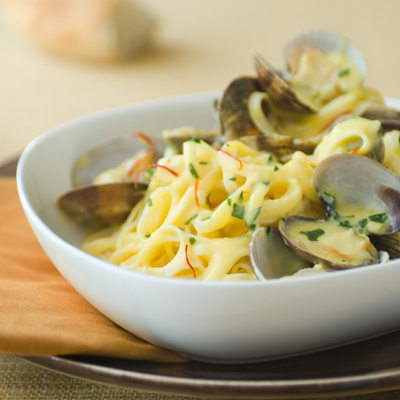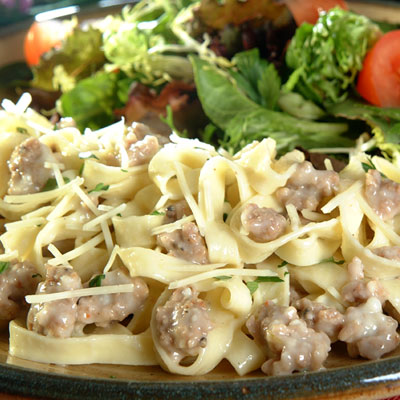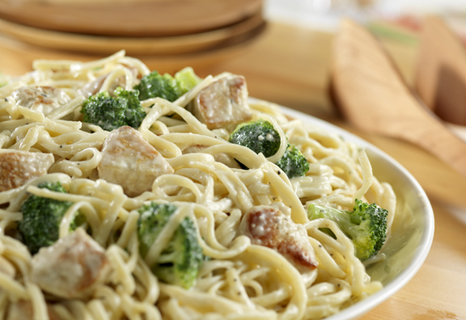Parmigiano-Reggiano is a hard granular cheese, cooked but not pressed, named after the producing areas near Parma, Reggio Emilia, Modena, and Bologna (all in Emilia-Romagna), and Mantova (in Lombardia), Italy. Under Italian law only cheese produced in these provinces may be labelled “Parmigiano-Reggiano”, while European law classifies the name as a protected designation of origin. It is informally known as the “king of cheese.”
Parmigiano is the Italian adjective for Parma. Reggiano is the Italian adjective for Reggio Emilia. Parmesan is the French-language name for it and also serves as the informal term for the cheese in the English language. The name Parmesan is also used for cheeses which imitate Parmigiano-Reggiano, with phrases such as Italian hard cheese adopted to skirt legal constraints. The closest legitimate Italian cheese to Parmigiano-Reggiano is Grana Padano.
History
According to legend, Parmigiano-Reggiano was created in the course of the Middle Ages in Bibbiano, in the province of Reggio Emilia. Its production soon spread to the Parma and Modena areas. Historical documents show that in the 13th-14th century Parmigiano was already very similar to that produced today which suggests that its origins can be traced to far earlier.
It was praised as early as 1348 in the writings of Boccaccio; in the Decameron, he invents ‘a mountain, all of grated Parmesan cheese’, on which ‘dwell folk that do nought else but make macaroni and ravioli, and boil them in capon’s broth, and then throw them down to be scrambled for; and hard by flows a rivulet of Vernaccia, the best that ever was drunk, and never a drop of water therein.’
During the Great Fire of London of 1666, Samuel Pepys buried his ‘Parmazan cheese, as well as [his] wine and some other things’ in order to preserve them.
In the memoirs of Giacomo Casanova, he remarked that the name “Parmesan” was a misnomer in his time (mid-18th century) as the cheese was produced in the town of Lodi, not Parma. This comment originates probably from the fact that a grana cheese very similar to the “Parmigiano”, the Grana Padano, is produced in the Lodi area.
Uses
Parmigiano-Reggiano is commonly grated over pasta dishes, stirred into soups and risottos, and eaten on its own. It is often shaved or grated over other dishes.
Slivers and chunks of the hardest parts of the crust are sometimes simmered in soup.
The hollowed-out crust of a whole wheel of Parmigiano can be used as a serving pot for large groups.
Production
Parmigiano-Reggiano is made from raw cow’s milk. The whole milk of the morning milking is mixed with the naturally skimmed milk (it is left in large shallow tanks to allow the cream to separate) of the previous evening’s milking, resulting in a part skim mixture. The milk is pumped into copper-lined vats (copper heats and cools quickly). Starter whey is added, and the temperature is raised to 33–35 °C (91–95 °F). Calf rennet is added, and the mixture is left to curdle for 10–12 minutes. The curd is then broken up mechanically into small pieces (around the size of rice grains). The temperature is then raised to 55 °C (131 °F) with careful control by the cheese-maker. The curd is left to settle for 45–60 minutes. The compacted curd is collected in a piece of muslin before being divided in two and placed in molds. There are 1100 L (290 gallons) of milk per vat, producing two cheeses each. The curd making up each wheel at this point weighs around 45 kg (100 lb). The remaining whey in the vat was traditionally used to feed the pigs from which “Prosciutto di Parma” (cured Parma ham) was produced. The barns for these animals were usually just a few yards away from the cheese production rooms.
The cheese is put into a stainless steel round form that is pulled tight with a spring powered buckle so the cheese retains its wheel shape. After a day or two, the buckle is released and a plastic belt imprinted numerous times with the Parmigiano-Reggiano name, the plant’s number, and month and year of production is put around the cheese and the metal form is buckled tight again. The imprints take hold on the rind of the cheese in about a day and the wheel is then put into a brine bath to absorb salt for 20–25 days. After brining, the wheels are then transferred to the aging rooms in the plant for 12 months. Each cheese is placed on wooden shelves that can be 24 cheeses high by 90 cheeses long or about 4,000 total wheels per aisle. Each cheese and the shelf underneath it is then cleaned manually or robotically every 7 days. The cheese is also turned at this time.
At 12 months, the Consorzio Parmigiano-Reggiano inspects each and every cheese. The cheese is tested by a master grader whose only instruments are a hammer and his ear. By tapping the wheel at various points, he can identify undesirable cracks and voids within the wheel. Those cheeses that pass the test are then heat branded on the rind with the Consorzio’s logo. Those that don’t pass the test used to have their rinds marked with lines or crosses all the way around to inform consumers that they are not getting top-quality Parmigiano-Reggiano; more recent practices simply have these lesser rinds stripped of all markings.
Traditionally, cows have to be fed only on grass or hay, producing grass fed milk. Only natural whey culture is allowed as a starter, together with calf rennet.
The only additive allowed is salt, which the cheese absorbs while being submerged for 20 days in brine tanks saturated to near total salinity with Mediterranean sea salt. The product is aged an average of two years. The cheese is produced daily, and it can show a natural variability. True Parmigiano-Reggiano cheese has a sharp, complex fruity/nutty taste with a strong savory flavor and a slightly gritty texture. Inferior versions can impart a bitter taste.
The average Parmigiano-Reggiano wheel is about 18–24 centimetres (7.1–9.4 in) high, 40–45 centimetres (16–18 in) in diameter, and weighs 38 kilograms (84 lb).
Use of the name
The name is trademarked, and in Italy there is legal exclusive control exercised over its production and sales by the Parmigiano-Reggiano cheese Consorzio, which was created by a governmental decree. There are strict criteria each wheel must meet early in the aging process, when the cheese is still soft and creamy, to merit the official seal and be placed in storage for aging. Because it is widely imitated, Parmigiano-Reggiano has become an increasingly regulated product, and in 1955 it became what is known as a certified name (which is not the same as a brand name).
Thus in the European Union, “Parmigiano-Reggiano” is a protected designation of origin; legally the name refers exclusively to the Parmigiano-Reggiano DOP cheese manufactured in a limited area in Northern Italy. Special seals identify the product as authentic, with the identification number of the dairy, the production month and year, a code identifying the individual wheel and stamps regarding the length of aging.
Outside Europe, most notably in the United States, commercially produced imitator cheeses may be legally sold under the generic name Parmesan. When sold in Europe, such cheese are obliged to use another name, such as Kraft’s “pamesello italiano”.
Other cheeses similar to Parmigiano Reggiano
The Grana Padano is an Italian cheese quite similar to the Parmigiano-Reggiano. Differences are:
- It is produced mainly in Lombardy, the name Padano derives from the Pianura Padana
- Cows can also be fed silage, not grass and hay only
- The milk contains slightly less fat
- Milk of several days can be used
- No organic certifications
- No controlled proceedings over cow breeds
- No cow feed control
- It is aged for up to 20 months
Commercial Parmesan cheeses common in North America typically differ from Parmigiano-Reggiano in several ways:
- The cheese is aged for a shorter time.
- The milk used is pasteurized.
- The curds for Parmigiano-Reggiano are cut into fragments the size of wheat grains, which is much finer than the fragments created in the manufacture of the American version of Parmesan. The smaller curds drain more effectively.
- American Parmesan is mechanically pressed to expel excess moisture.
- Parmesan wheels in the United States average 11 kg (24 pounds). The size difference can affect their salt saturation during the brining process; Parmigiano-Reggiano on average contains two-thirds less salt than the average Parmesan.
- It is often sold grated.






